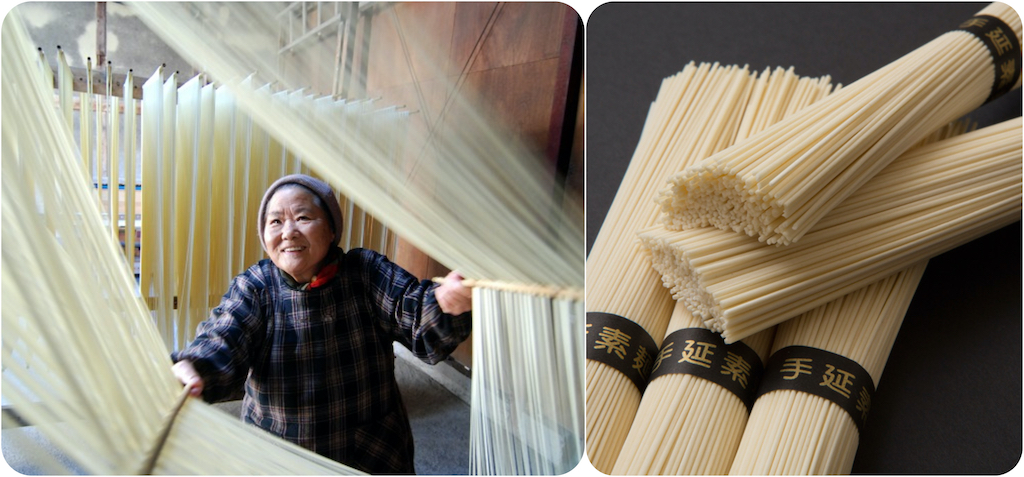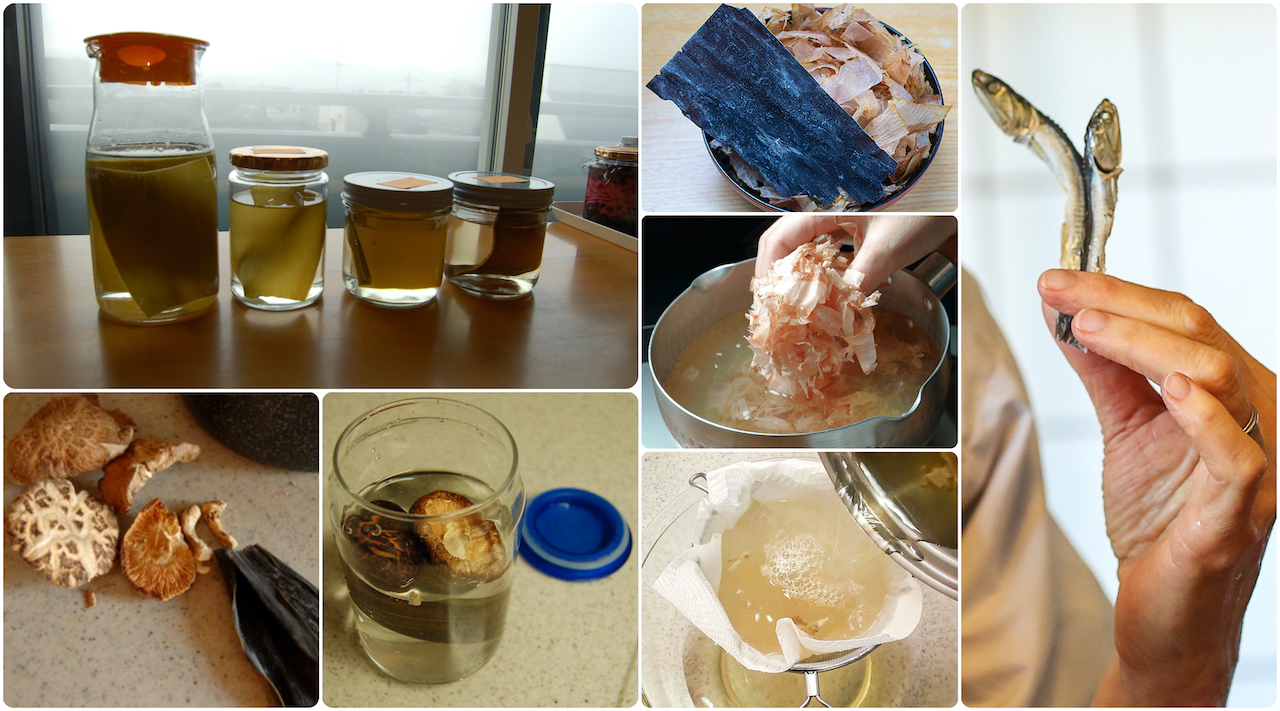
煮麺 ・Nyūmen
Sōmen Noodles Served in Piping Hot Broth
Sōmen is usually served chilled, often on chunks of ice. Dipped into a deeply flavored sauce to which condiments have been added, it becomes a survival strategy for hot, humid days. But in Kagawa Prefecture (Shikoku), one of three major producers of sōmen, the thread-thin wheat noodle is enjoyed year-round… most often as NYŪMEN.
On chilly days nyūmen makes for a quick, belly-warming meal (the noodles cook VERY quickly!) that can be as light, or substantial, as you like.
Use this BASIC RECIPE to create your own house version of NYŪMEN. Scroll down this page for BROTH OPTIONS.
Looking for more suggestions on how to take this master recipe and expand your soup repetoire? Look at PROJECT Nyūmen.

素麺 ・SŌMEN NOODLES
The well-kneaded noodle dough is made from a wheat flour and salt-water mixture to which sesame seed or cottonseed oil is lightly applied lightly. The noodles are gently stretched thinner and thinner. Finally, they are hung over a rack and allowed to dry before being cut into shorter lengths. The resulting dried noodles are pure white, rather brittle, thin sticks. They are packaged in bundles of about 50 grams, intended to be a single, small serving. Sōmen noodle production has traditionally been a cold-weather activity, beginning in November and going through March. Finished noodles are allowed to “age” in the warehouse for a year or more. Indeed, some believe that aged noodles are better than freshly made ones. Historically, commercial production has been centered in the wheat-growing areas of the Inland Sea, primarily the Sanuki region (modern-day Kagawa and bits of Eihime and Tokushima prefectures on the island of Shikoku).
Download instruction on buying, storing and cooking sōmen noodles.

Simple vegan broths can be made using either Kelp Alone Stock or a mushroom-enriched version called Sankai Dashi (literally Mountain-Sea Stock). Using several varieties of kombu will add depth and complexity of flavor to your noodle soup.
Stocks using fish such as Standard Sea Stock (and Smoky Sea Stock) and Sanuki Sea Stock (made with iriko or niboshi dried sardines) are the most commonly encountered.




